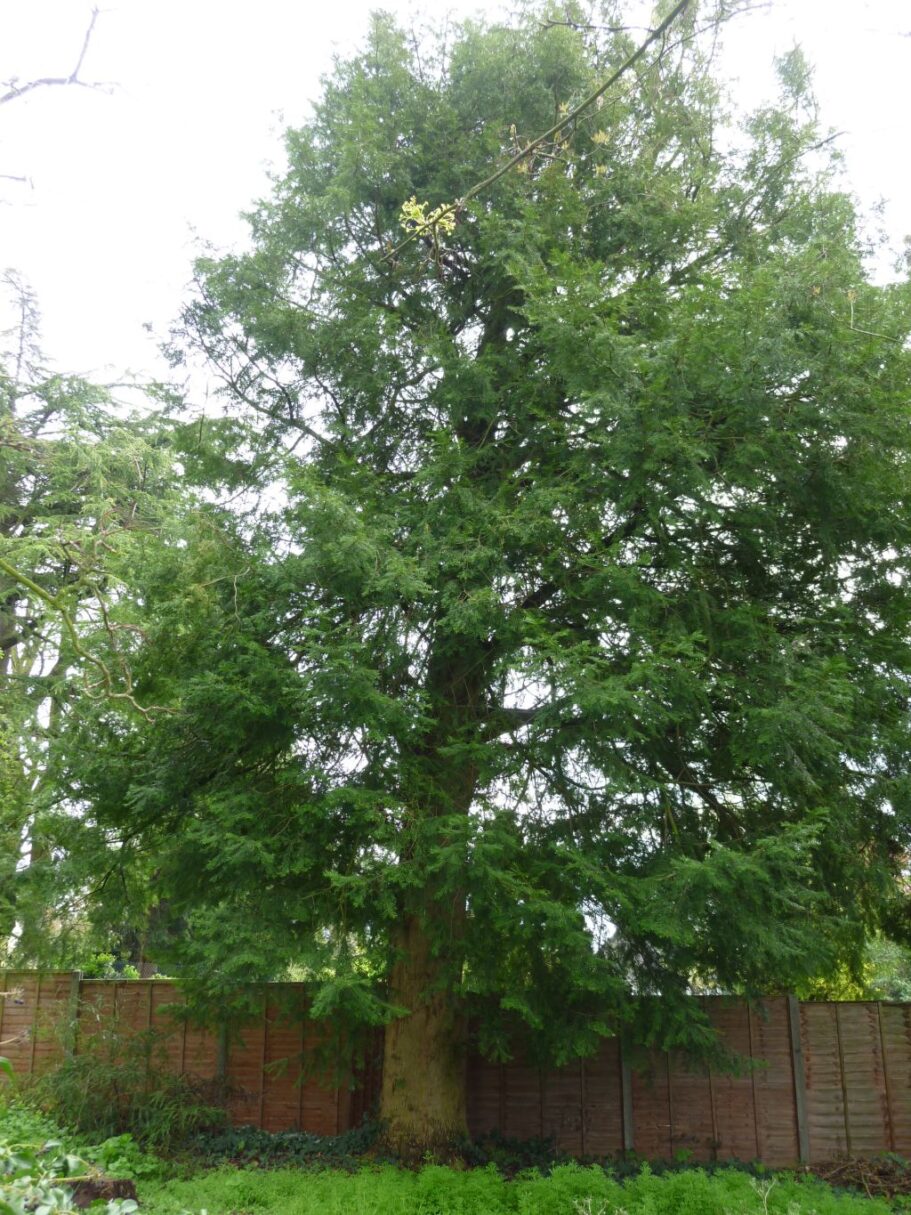#27 CALIFORNIAN NUTMEG
Torreya californica

County Champion
This tree can be found in the south-east corner of the American Section.
| Distribution: | A close relative of the Yew, and originates from the cool slopes and canyons of California. This tree is scarce in the wild being confined to 20 to 25 isolated populations and infrequently grown in gardens. |
| Planting Date: | 1916, supplied by the John St. Barbe Baker, The Firs, West End, Southampton. |
| Growth Habit: | It is adapted to grow in lower light situations under taller trees where its search for light leads to a rather rather scruffy shape. In the open it forms a more typical conical shape with straight, erect trunk and whorled horizontal branches. |
| Bark: | Grey to reddish bark in flat, stringy, ridges. With occasional small nodules. Branches look as though they have been pushed into a soft, spongy surface where they meet the trunk. The effect is that of springing from a dimple. |
| Leaf: | Fiercely sharp-tipped, stiff, hard and yew-like leaves which taste of grapefruit when bitten. “Rich sage-like aroma”. Narrow whitish bands in 2 slight grooves on underside. |
| Flowers: | Male flowers said to be pale yellow egg-shaped 4 cm. |
| Fruit: | Olive-like, green, streaked with purple, covered with thin resinous flesh over grooved shell of seed. |
| Size in 2023: | Height 17 m and girth: 264 cm at 1.5 m. (potential height 22 m) |
| Uses: | In the past this tree was used for cabinet making as it has straight grain, is strong, light, and easy to work. It was also used for fence and building work due to its resistance to rot but now, due to its rarity, it is no longer used. Edible oils can be extracted. |
| Plant Hunter: | The first specimens of this tree were brought to this country by William Lobb in 1851. He discovered it in 1849 on an expedition sponsored by Veitch Nurseries of Exeter. Initially it was thought the fruit could be used as a spice but the tree has no commercial value and requires both male and female plants to produce fruits. |
| Anecdotes and Comments: | Known locally as Stinking Yew, this is rarely planted. Named in honour of Dr. John Torrey, a famous American botanist. Rated ‘County Champion’ in 2023 by The Tree Register by virtue of its height and girth. |